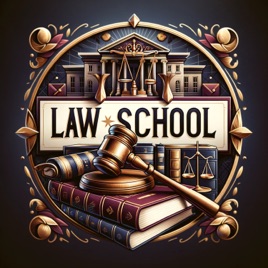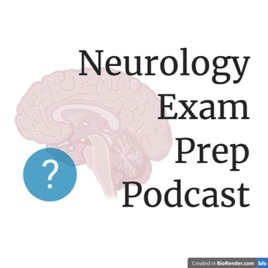
Advertise on podcast: Law School
Rating
3.2 from
Country
This podcast has
995 episodes
Language
Publisher
Explicit
No
Date created
2020/04/11
Average duration
9 min.
Release period
2 days
Description
The Law School of America podcast is designed for listeners who what to expand and enhance their understanding of the American legal system. It provides you with legal principles in small digestible bites to make learning easy. If you're willing to put in the time, The Law School of America podcasts can take you from novice to knowledgeable in a reasonable amount of time. Support this podcast: https://podcasters.spotify.com/pod/show/law-school/support
Podcast episodes
Check latest episodes from Law School podcast
Real Property: Episode 1: Introduction to Real Property
2024/02/26
Let’s start with a question: Why is Real Property law a critical component of the Bar Exam? The simple answer is that Real Property touches on many aspects of our lives - from the ownership of our homes to the zoning laws that dictate what can be built in our neighborhoods. It’s a foundational area of law that every attorney should be familiar with, whether you specialize in real estate transactions or not.
Now, to lay the groundwork, let’s clarify two terms you’ve probably heard a lot: Real Property and Personal Property. At its core, the distinction is quite straightforward. Real Property refers to land and anything attached to it. This can include buildings, trees, minerals, and even the rights associated with the land, like air rights.
On the flip side, Personal Property is essentially everything else. It's the movable objects that you own. Your car, your laptop, your clothes - these are all examples of Personal Property. The key difference lies in mobility and permanence. Real Property stays put; Personal Property can move with you.
Understanding the types of Real Property interests is crucial for navigating Real Property law. These interests determine what rights you have over a property. There are several types, but today we’ll focus on three main ones: Fee Simple Absolute, Life Estate, and Leasehold Interest.
Fee Simple Absolute gives you the most complete ownership of property possible. You own the land and can do with it as you please, subject to laws and regulations, of course. It’s the most common form of property ownership and, unless specified otherwise, what people usually mean when they talk about owning property.
Next, we have the Life Estate. This is a bit more specialized. A Life Estate gives someone the right to use and benefit from a property for the duration of their life. However, they can’t sell the property, and upon their death, it passes to another designated person, known as the remainderman.
Lastly, there’s the Leasehold Interest, which you’re likely familiar with if you’ve ever rented an apartment. This gives you the right to use and occupy the property, but only for a predetermined period. Unlike Fee Simple Absolute, you don’t own the property; you just have a temporary right to use it.
Along with understanding these interests, it’s important to get comfortable with key legal terminologies in Real Property law. Terms like "easement," which is the right to use someone else’s land for a specific purpose, or "encumbrance," which refers to a claim or liability attached to the property, like a mortgage or lien. These terms are the building blocks for more complex Real Property concepts we’ll cover in later episodes.
So, why does all this matter for the Bar Exam? Well, these concepts form the basis of many Real Property questions you’ll encounter. Whether it’s a question about the rights of a property owner or the specifics of a lease agreement, having a solid grasp of these fundamentals will give you a strong foundation to build upon.
---
Send in a voice message: https://podcasters.spotify.com/pod/show/law-school/message
Support this podcast: https://podcasters.spotify.com/pod/show/law-school/support
more
Mastering the Bar Exam: Criminal Law - Conclusion and Review (Section Ten)
2024/02/23
Criminal Liability Principles:
Actus reus (physical act) and mens rea (mental state) are key in criminal cases.
Actus reus includes deliberate actions or omissions violating legal duties.
Mens rea involves evaluating the defendant's mental state during the offense, affecting blameworthiness.
Categories of Crime:
Offenses against persons (assault, battery) directly harm individuals and raise critical legal issues.
Property crimes (theft, burglary) violate ownership rights and involve complex elements.
Crimes against public order and morality challenge societal norms and require a nuanced legal approach.
Defenses to Criminal Liability:
Justifications (self-defense, necessity) consider exceptional circumstances where criminal acts are deemed legally permissible.
Excuse defenses (insanity, intoxication) address conditions impairing the defendant's capacity to form mens rea.
Procedure in Criminal Cases:
Law enforcement investigates crimes, gathers evidence, and makes arrests.
The judiciary oversees trials, ensuring fairness and protecting the accused's rights.
Legal representation (defense attorneys, prosecutors) is crucial for navigating the complexities of criminal law.
Sentencing and Punishment:
Sentencing determines appropriate punishment based on the crime's severity and the defendant's criminal history.
Sentencing guidelines promote consistency, and alternative sentences consider rehabilitation potential.
Appeals and Post-Conviction Remedies:
The appellate process allows for the review of trial court decisions to ensure fairness and uphold legal rights.
Post-conviction remedies like habeas corpus petitions challenge the legality of detention, preventing wrongful convictions.
---
Send in a voice message: https://podcasters.spotify.com/pod/show/law-school/message
Support this podcast: https://podcasters.spotify.com/pod/show/law-school/support
more
Mastering the Bar Exam: Civil Procedure: Federal Rules of Civil Procedure (Section Ten)
2024/02/22
Key Rules and Their Application in Civil Litigation.
Scope and Purpose: Ensure just, speedy, and inexpensive determination of every action.
Summons: Formal commencement of a civil action; ensures proper notification of defendants.
Pleading: Concise and direct pleadings for clarity and streamlined litigation.
Defenses and Objections: Early dismissal of cases lacking legal basis.
Discovery: Proportionality; mandatory disclosures for transparency and efficiency.
Summary Judgment: Efficient resolution without trial when no genuine dispute of material fact.
Rule Interpretation and Application.
Interpretive Principles: Balance efficiency and substantive rights; Advisory Committee's Notes.
Application in Various Contexts: Tailoring procedures to case specifics.
Judicial Discretion: Managing cases, admissibility of evidence, and relevance of discovery.
Evolving Interpretations: Adapting to new legal issues and technological changes.
---
Send in a voice message: https://podcasters.spotify.com/pod/show/law-school/message
Support this podcast: https://podcasters.spotify.com/pod/show/law-school/support
more
Mastering the Bar Exam: Constitutional Law - Review and Case Law Analysis (Podcast Session Ten)
2024/02/21
Key Supreme Court Decisions
Marbury v Madison (1803): Established judicial review to ensure laws comply with the Constitution.
Brown v Board of Education (1954): Ruled "separate but equal" public schools unconstitutional, boosting the Civil Rights Movement.
Miranda v Arizona (1966): Requires law enforcement to inform suspects of their rights before interrogation.
Roe v Wade (1973): Upheld the right to an abortion, sparking ongoing debates about reproductive rights.
Obergefell v Hodges (2015): Recognized the right to same-sex marriage nationwide, expanding civil liberties for LGBTQ+ individuals.
Application of Principles
Hypothetical scenarios illustrate how constitutional principles are applied in real-world contexts.
Scenario 1: Banning political protests on public university campuses would likely be deemed unconstitutional as it restricts First Amendment rights.
Scenario 2: A comprehensive knowledge test for voters could be challenged as discriminatory under the Equal Protection Clause and Voting Rights Act.
Scenario 3: Searches without probable cause in high-crime neighborhoods would likely be found unconstitutional for violating the Fourth Amendment's protection against unreasonable searches and seizure.
---
Send in a voice message: https://podcasters.spotify.com/pod/show/law-school/message
Support this podcast: https://podcasters.spotify.com/pod/show/law-school/support
more
Evidence Law Made Easy: Relevance
2024/02/20
Relevance Defined.
First, what exactly is relevance? Evidence is relevant if it has any tendency to make a fact that is important to the case more or less probable than it would be without the evidence.
In other words, for evidence to be relevant, it has to help prove or disprove a fact that matters to the ultimate issue in the case. The key question is always - does this evidence have any bearing on making any material fact more or less likely?
If the answer is yes, the evidence meets the test for legal relevance.
Determining Relevance.
So how do courts determine if a particular piece of evidence is legally relevant to the case?
Well, it’s important to keep in mind that the standard for relevance is very low. The evidence doesn’t have to definitively prove a fact - it just has to alter the probability for or against that fact even a little bit.
Courts look at both the evidence itself and the issues in the case. They ask - does this evidence have any logical relationship or connection to the facts we need to prove here?
For example, if the dispute is about whether a defendant was driving recklessly, a video showing the driver texting would be relevant because it makes reckless driving more probable.
Excluding Irrelevant Evidence.
Okay, so now we know how courts determine if evidence is relevant. But what happens if evidence is found to be irrelevant?
The basic rule is that irrelevant evidence will be excluded from the case and the jury cannot hear it. This helps to avoid jury confusion and wasted time on facts that just aren’t important.
There are a couple steps to objecting to evidence as irrelevant. First, the attorney makes an objection such as "Objection, irrelevant!"
Then the judge will ask the attorney to explain why the evidence is irrelevant. The attorney needs to show how the evidence has no relationship or bearing on any material facts in the case.
If the judge agrees, the evidence will be excluded and the jury will not get to consider it. Pretty simple right?
---
Send in a voice message: https://podcasters.spotify.com/pod/show/law-school/message
Support this podcast: https://podcasters.spotify.com/pod/show/law-school/support
more
Mastering the Bar Exam: Criminal Procedure - Module 9: Conclusion of the Course - Recap (Module Nine)
2024/02/19
Key Takeaways
Constitutional Protections: The Fourth, Fifth, Sixth, and Fourteenth Amendments provide critical protections against unreasonable searches and seizures, self-incrimination, and ensure the right to a fair trial.
Legal Processes: We've navigated through the stages of criminal proceedings, from arrest to trial, including essential processes like arraignment, plea bargaining, and the significance of the jury selection process.
Evolving Challenges: The course has also highlighted how technological advancements and societal changes continue to shape and challenge the application of criminal procedure principles, necessitating an adaptive legal system.
Special Topics: Special attention to juvenile justice and the impact of digital evidence underscored the need for specialized knowledge and approaches within these unique areas.
Guidance for Further Study
For Bar Exam Preparation
Focused Review: Concentrate on areas heavily tested on the bar exam, such as constitutional protections, rights of the accused, and key Supreme Court decisions that have shaped criminal procedure.
Practice Questions: Regularly engage with multiple-choice questions and essay prompts from past bar exams to familiarize yourself with the exam format and refine your ability to apply legal principles under timed conditions.
Study Groups: Join or form study groups to discuss and debate challenging concepts and hypothetical scenarios, enhancing your understanding through collaborative learning.
Advanced Topics for Further Exploration
Comparative Criminal Procedure: Investigate how other legal systems approach criminal justice, offering a broader perspective on the diversity of legal practices and philosophical underpinnings.
Forensic Science in Criminal Law: Gain a deeper understanding of how forensic evidence is collected, analyzed, and presented in court, including the legal and ethical implications of forensic technologies.
International Criminal Law: Explore the principles and practices of international criminal justice, including the role of international courts and the prosecution of crimes against humanity and genocide.
Continuing Legal Education (CLE) and Specialization
CLE Courses: Stay informed of the latest developments in criminal law and procedure through continuing legal education courses, which are essential for maintaining legal licensure and enhancing professional skills.
Certification in Specialized Areas: Consider pursuing certification in specialized areas of criminal law, such as juvenile justice or cybercrime, to develop expertise that can enhance your legal practice.
---
Send in a voice message: https://podcasters.spotify.com/pod/show/law-school/message
Support this podcast: https://podcasters.spotify.com/pod/show/law-school/support
more
Mastering the Bar Exam: Criminal Law - Procedure in Criminal Cases (Section Nine)
2024/02/16
The Role of Police: Arrest, Search, and Seizure.
Arrest Procedures: An arrest marks the beginning of formal legal proceedings against an individual. Police must have probable cause to believe a person has committed a crime. In many cases, an arrest warrant issued by a judge is required, although there are exceptions, such as when a crime is committed in an officer's presence.
Search and Seizure: The Fourth Amendment protects citizens from unreasonable searches and seizures. Police generally need a warrant to conduct searches, but several exceptions exist, including consent searches, search incident to a lawful arrest, and exigent circumstances. The exclusionary rule prohibits evidence obtained in violation of the Fourth Amendment from being used in court.
Miranda Rights: Upon arrest, individuals must be informed of their Miranda rights, which include the right to remain silent and the right to an attorney. Failure to provide these warnings can result in the suppression of any statements made by the defendant.
The Criminal Trial Process.
Arraignment: This is the defendant's first court appearance, where the charges are formally read, and the defendant enters a plea (guilty, not guilty, or no contest).
Pre-Trial Motions: Before the trial, both sides may file motions to shape the proceedings, including motions to dismiss charges, suppress evidence, or determine the admissibility of certain facts.
Trial: A criminal trial can be before a judge (bench trial) or a jury. The prosecution must prove the defendant's guilt "beyond a reasonable doubt," a high standard reflecting the serious implications of a criminal conviction.
Opening Statements: Both sides present an overview of their case to the jury.
Presentation of Evidence: The prosecution and defense present evidence and call witnesses. Cross-examination is used to challenge the evidence or testimony presented by the opposing side.
Closing Arguments: Both sides summarize their case, attempting to persuade the jury of the defendant's guilt or innocence.
Jury Deliberation and Verdict: The jury deliberates and then delivers a verdict. If the jury cannot reach a unanimous decision, a mistrial may be declared.
Sentencing and Punishment.
Following a conviction, the court will determine the appropriate sentence for the defendant. Sentencing can involve a range of penalties:
Fines and Restitution: Financial penalties or orders to compensate victims.
Probation: Allowing the offender to remain in the community under supervision instead of serving time in prison.
Incarceration: Sentences to jail (short-term) or prison (long-term) depending on the severity of the crime.
Death Penalty: In jurisdictions that allow it, the death penalty can be imposed for the most serious crimes.
Sentencing Guidelines: Many jurisdictions have established guidelines to ensure consistent and fair sentencing practices, although judges often have discretion within these guidelines.
Appeals and Post-Conviction Remedies
Appeals: Defendants have the right to appeal their conviction or sentence if they believe there was a legal error in the trial process. Appellate courts review the record of the trial court proceedings but do not consider new evidence.
Post-Conviction Remedies: Beyond appeals, defendants can seek other forms of relief, such as habeas corpus petitions, which challenge the lawfulness of the defendant's imprisonment.
Expungement and Pardons: Under certain conditions, a defendant's criminal record can be expunged, effectively sealing it from public view. Pardons, granted by a governor or the president, forgive the convicted individual and may restore rights lost as a result of the conviction.
---
Send in a voice message: https://podcasters.spotify.com/pod/show/law-school/message
Support this podcast: https://podcasters.spotify.com/pod/show/law-school/support
more
Mastering the Bar Exam: Civil Procedure: Special Proceedings and Alternative Dispute Resolution (Section Nine)
2024/02/15
Significance and Rules of Class Actions.
Purpose: Class actions allow individual plaintiffs with common claims to band together to sue a defendant. This is particularly useful when the cost of litigating individual claims would outweigh the individual damages, effectively providing a mechanism to pursue justice that might otherwise be economically unfeasible.
Certification: For a lawsuit to proceed as a class action, the court must certify the class. Key criteria for certification include:
Commonality: There must be questions of law or fact common to the class.
Adequacy: The representative parties must fairly and adequately protect the interests of the class.
Numerosity: The class is so numerous that joinder of all members is impracticable.
Typicality: The claims or defenses of the representative parties are typical of the claims or defenses of the class.
Notice: Once a class is certified, members must be notified. This allows individuals the opportunity to opt out of the class action and pursue individual litigation if they so choose.
Settlements: Class action settlements require court approval. This ensures that the settlement is fair, reasonable, and adequate for all class members.
Multi-District Litigation (MDL).
MDL refers to a special legal procedure designed to speed the process of handling complex cases, such as air disaster litigation or complex product liability suits. It involves transferring all pending civil cases of a similar type filed in different federal districts to a single district to streamline pretrial proceedings.
Understanding MDL.
Consolidation for Pretrial Proceedings: The Judicial Panel on Multidistrict Litigation, a group of federal judges, decides whether cases should be consolidated under MDL and which district court will oversee the proceedings. The aim is to avoid duplicate discovery, prevent inconsistent pretrial rulings, and conserve resources.
Remand: After pretrial proceedings and discovery are complete, cases are typically remanded back to their original districts for trial. However, some cases may settle during the MDL process.
Arbitration and Mediation.
Arbitration and mediation are two principal forms of Alternative Dispute Resolution (ADR), offering parties the chance to resolve disputes outside the traditional court system.
Arbitration.
Arbitration is a process where disputing parties agree to submit their conflict to one or more neutral third parties, known as arbitrators, making a binding decision. It is less formal than a trial and often faster.
Binding Nature: Arbitration results in a binding decision, with limited opportunities for appeal.
Selection of Arbitrators: Parties typically have a say in selecting the arbitrators, which allows for experts in the specific subject matter to preside over the dispute.
Procedure: The arbitration process is governed by rules agreed upon by the parties or provided by an arbitration institution. These can be more flexible than court procedures.
Mediation.
Mediation involves a neutral third party, the mediator, who helps disputing parties find a mutually acceptable solution. Unlike arbitration, mediation does not result in a binding decision imposed by the mediator.
Facilitative Role: The mediator facilitates dialogue, identifies issues, and helps explore solutions but does not make decisions for the parties.
Confidentiality: Mediation sessions are private and confidential, encouraging open dialogue and negotiation.
Voluntary and Non-binding: Parties retain control over the process and the outcome. They can withdraw at any time, and any settlement reached is by mutual consent.
---
Send in a voice message: https://podcasters.spotify.com/pod/show/law-school/message
Support this podcast: https://podcasters.spotify.com/pod/show/law-school/support
more
Mastering the Bar Exam: Constitutional Law - Important Constitutional Amendments (Session Nine)
2024/02/14
Constitution, focusing on their profound impact on American society and law.
The Reconstruction Amendments.
13th Amendment (Abolition of Slavery).
Ratified in 1865, this amendment abolished slavery and involuntary servitude, except as punishment for a crime. It was a monumental step towards racial equality, directly addressing the institution of slavery that had divided the nation.
Legal Impact: Beyond its immediate effect of emancipating slaves, the 13th Amendment has served as the foundation for later civil rights legislation and court decisions, including laws against peonage, forced labor, and human trafficking.
14th Amendment (Citizenship, Due Process, and Equal Protection)
Ratified in 1868, it contains several key provisions: granting citizenship to all persons born or naturalized in the United States, including former slaves; requiring states to afford due process of law; and mandating equal protection under the laws.
Legal Significance: This amendment fundamentally transformed the relationship between states and citizens, extending the protection of civil rights and liberties to the state level. It has been central to landmark Supreme Court decisions on segregation, abortion, marriage equality, and more.
15th Amendment (Voting Rights).
Ratified in 1870, it prohibits the denial of the right to vote based on race, color, or previous condition of servitude, aiming to secure voting rights for African American men.
Impact and Challenges: Despite its clear mandate, the enforcement of the 15th Amendment faced significant obstacles, including Jim Crow laws and other forms of voter suppression. It laid the groundwork for the Voting Rights Act of 1965, which aimed to overcome legal barriers at the state and local levels that prevented African Americans from exercising their right to vote as guaranteed under the 15th Amendment.
Recent Amendments and Their Impact.
19th Amendment (Women's Suffrage).
Ratified in 1920, this amendment granted women the right to vote, marking a pivotal moment in the women's rights movement.
Impact: The 19th Amendment was the culmination of decades of activism and struggle, significantly expanding democracy in the United States. It has had a lasting effect on American politics and society, increasing gender equality in voting and beyond.
24th Amendment (Abolition of Poll Taxes).
Ratified in 1964, it prohibited the use of poll taxes in federal elections, a practice that had been used to disenfranchise poor and minority voters.
Significance: By eliminating a significant barrier to voting, the 24th Amendment furthered the democratic principle of universal suffrage, paving the way for greater voter participation across socioeconomic lines.
26th Amendment (Voting Age Lowered to 18).
Ratified in 1971, in response to arguments that those old enough to be drafted for the Vietnam War should also have the right to vote.
Impact: Lowering the voting age from 21 to 18 expanded the electorate and emphasized the importance of youth engagement in the political process. It reflected societal changes and acknowledged the capability of younger citizens to contribute meaningfully to democracy.
---
Send in a voice message: https://podcasters.spotify.com/pod/show/law-school/message
Support this podcast: https://podcasters.spotify.com/pod/show/law-school/support
more
Evidence Law Made Easy: Introduction to Evidence
2024/02/13
I. Introduction to Evidence
A. Purpose and Importance of Evidence Law.
Evidence law serves a foundational role in the legal process, ensuring that trials are conducted fairly and that decisions are based on reliable, relevant information. Its primary purposes are:
To Ascertain the Truth: Evidence law helps in uncovering the truth by allowing certain pieces of information to be presented in court while excluding others that are unreliable, irrelevant, or prejudicial.
To Ensure Fairness: By providing clear rules for what evidence can be considered, evidence law aims to create a level playing field for all parties in a legal dispute.
To Enhance Efficiency: Evidence rules streamline the legal process by preventing the introduction of evidence that would waste time or distract from the main issues of the case.
To Protect Rights: Specific rules of evidence are designed to safeguard constitutional and statutory rights, such as the right against self-incrimination and the right to confront witnesses.
B. Sources of Evidence Law
Evidence law in the United States is primarily derived from two sources:
Federal Rules of Evidence (FRE): The FRE governs proceedings in the federal courts and serves as a model for many states. They were enacted to bring uniformity to federal evidence law and are regularly updated to address new legal challenges, including those arising from technological advancements.
State Evidence Codes: Each state has its own set of evidence rules, which may closely follow the FRE or diverge based on local legal traditions and needs. State supreme courts and legislatures are responsible for creating and modifying these rules.
In addition to these codified rules, common law principles still influence evidence law, especially in areas not fully covered by the FRE or state codes.
C. Types of Evidence.
Evidence can be classified into several types, each with specific rules governing its use:
Direct Evidence: Directly proves a fact without needing inference, such as eyewitness testimony that a person was seen at a crime scene.
Circumstantial Evidence: Requires inference to connect it to a conclusion of fact. For example, finding a suspect's fingerprints at a crime scene does not directly prove they committed the crime but requires an inference.
Real Evidence: Tangible items that are directly involved in the case at hand, such as a weapon used in a crime.
Demonstrative Evidence: Evidence created for trial to demonstrate or illustrate a testimony or a fact, such as charts, maps, diagrams, and models.
Digital Evidence: Information stored or transmitted in digital form that is relevant to the case. This includes emails, digital photographs, text messages, and information stored on electronic devices.
D. Overview of the Admissibility of Evidence
The admissibility of evidence is governed by a set of criteria designed to ensure that only relevant, reliable, and fair evidence is presented to the trier of fact (judge or jury). Key considerations include:
Relevance: Evidence must be relevant to be admissible, meaning it must make a fact in question more or less probable than it would be without the evidence.
Reliability: Certain types of evidence must meet specific reliability standards to be admissible, such as scientific evidence, which must be based on scientifically valid principles and methods.
Prejudice vs. Probative Value: Even if evidence is relevant, it may be excluded if its probative value is substantially outweighed by the risk of unfair prejudice, confusion of the issues, or misleading the jury.
Hearsay Rule: Hearsay, or statements made outside the courtroom offered for the truth of the matter asserted, is generally inadmissible unless it falls under one of the many exceptions to the hearsay rule.
---
Send in a voice message: https://podcasters.spotify.com/pod/show/law-school/message
Support this podcast: https://podcasters.spotify.com/pod/show/law-school/support
more
Mastering the Bar Exam: Criminal Procedure - Module 8: Review and Practice (Module Eight)
2024/02/12
Module 8: Review and Practice.
Expanding upon the summary and key takeaways of major themes and concepts in criminal procedure, we delve into the intricacies of the legal safeguards and processes that underpin the justice system in the United States. This exploration not only consolidates our understanding of the course content but also underscores the fundamental principles that guide the application of criminal law.
The Foundation of Criminal Procedure.
At the heart of criminal procedure is the Constitution, which provides the bedrock for the legal protections afforded to individuals within the United States. The Fourth, Fifth, Sixth, and Fourteenth Amendments collectively establish a framework that balances the state's interest in enforcing the law with the individual's right to be free from undue government interference. These amendments lay down the principles for lawful search and seizure, the right against self-incrimination, the right to due process, and the right to a fair trial, ensuring that the criminal justice system operates within the bounds of fairness and justice.
Search and Seizure.
The Fourth Amendment's prohibition against unreasonable searches and seizures is central to the protection of individual privacy. This segment of the course illuminates the nuanced concept of a "reasonable expectation of privacy," which is pivotal in determining the legality of law enforcement actions. We dissect the warrant requirement, underscoring the necessity for law enforcement to obtain judicial approval before conducting most searches or seizures, thereby imposing a critical check on governmental power. Additionally, we examine the exceptions to this requirement, such as consent searches, exigent circumstances, and the plain view doctrine, which permit law enforcement to operate with flexibility under certain conditions.
Miranda Rights and Custodial Interrogation.
The landmark decision in Miranda v Arizona stands as a testament to the Fifth Amendment's protection against self-incrimination. This section elucidates the procedural safeguards required to protect individuals during custodial interrogation. The Miranda rights, including the right to remain silent and the right to an attorney, are not just procedural formalities but foundational elements that ensure fairness in the interrogation process and protect against coercive practices.
Right to Counsel and Fair Trial.
The Sixth Amendment's assurance of the right to counsel and a fair trial is a cornerstone of the criminal justice system, safeguarding the integrity of the legal process. We explore the critical aspects of this amendment, including the right to a speedy trial, the right to confront witnesses, and the right to be represented by an attorney. These rights collectively ensure that individuals are treated equitably within the justice system, with an opportunity to defend themselves against charges in a manner that respects their dignity and legal rights.
Pretrial and Trial Procedures.
The journey from arrest to trial encompasses a series of procedural steps designed to uphold the principles of justice and fairness. We navigate through the processes of arraignment, where charges are formally presented; bail and pretrial detention, which raise important questions about liberty and risk; plea bargaining, a critical component of the criminal justice system that resolves the majority of cases; and the trial process itself, including jury selection and the establishment of guilt beyond a reasonable doubt. Each stage is imbued with legal protections and ethical considerations, reflecting the complexity of balancing state interests and individual rights.
Post-Conviction Remedies.
---
Send in a voice message: https://podcasters.spotify.com/pod/show/law-school/message
Support this podcast: https://podcasters.spotify.com/pod/show/law-school/support
more
Mastering the Bar Exam: Criminal Law - Crimes Against Public Order and Morality (Section Eight)
2024/02/09
Crimes Against Public Order and Morality.
Crimes against public order and morality encompass a broad category of offenses that, at their core, challenge the societal norms and regulations established to maintain a sense of general peace, decency, and good order within a community. These crimes can range from acts that disrupt public peace to behaviors deemed immoral or harmful to societal standards. Understanding these offenses requires not just a grasp of their legal definitions but an appreciation for their impact on communities and the legal system's role in balancing individual freedoms with public welfare.
1. Disorderly Conduct.
Disorderly conduct is a catch-all term for a wide range of behaviors that disturb the public peace or decency, or that are intended to annoy or alarm the public. Given its broad scope, what constitutes disorderly conduct can vary significantly from one jurisdiction to another, but it generally includes acts like fighting, making unreasonable noise, disrupting lawful assemblies, obstructing traffic, and using offensive words or gestures that are likely to provoke a violent reaction.
Legal Considerations: The broad nature of disorderly conduct statutes means that enforcement can be highly subjective, leading to criticisms regarding potential overuse or misuse, particularly in situations that might implicate free speech rights. Courts often look at the context of the behavior, including its location, audience, and any specific intent to cause public disruption.
Impact on Society: While some view disorderly conduct laws as necessary to maintain public order, others argue they can be used to target certain groups or to suppress dissent. The challenge for the legal system is to enforce these laws in a manner that respects individual rights while protecting the community from genuine disturbances.
2. Drug Offenses.
Drug offenses cover a range of activities prohibited by law, including the possession, distribution, manufacture, and trafficking of illegal drugs. These laws are intended to reduce the availability of illicit substances, decrease drug abuse, and limit the harm that drugs can cause to individuals and society.
Categories of Drug Offenses: Drug laws differentiate among various types of offenses based on the action (e.g., possession vs. trafficking), the type of drug (with different schedules classifying drugs according to their perceived danger and potential for abuse), and the quantity involved. Penalties can range from minor fines for simple possession to lengthy prison sentences for large-scale manufacturing or distribution.
Controversies and Reforms: The "War on Drugs" has led to significant debate over the effectiveness and fairness of drug laws, particularly those that impose harsh sentences for offenses involving minor quantities of drugs. Critics argue that these laws disproportionately affect certain communities and contribute to an overburdened criminal justice system. In response, there has been a movement toward reform, including drug decriminalization, legalization of cannabis in several states, and an emphasis on treatment over incarceration for nonviolent drug offenders.
3. Prostitution and Vice Crimes.
Prostitution and related vice crimes involve sexual activities that are considered immoral or illegal, including soliciting, promoting, or engaging in prostitution. These laws reflect societal norms regarding sexuality, morality, and public decency, but they are also subject to significant debate over issues of personal autonomy, public health, and the role of the state in regulating private behavior.
Legal Frameworks: Jurisdictions vary widely in their approach to prostitution and vice crimes. Some places criminalize activities related to prostitution, including soliciting and brothel-keeping, while others have legalized or decriminalized certain aspects of sex work under regulated conditions.
---
Send in a voice message: https://podcasters.spotify.com/pod/show/
more
Podcast sponsorship advertising
Start advertising on Law School & sponsor relevant audience podcasts
You may also like these courses Podcasts

4.8
33
65
The Teaching Behavior Together Podcast
Maria

4.6
115
147
Easy Spanish: Learn Spanish with everyday conversations | Conversaciones del día a día para aprender español
Paulina, José and the Easy Spanish team

4.7
78
99
IELTSCast | Weekly shadowing exercises for IELTS Speaking
Ryan Higgins

4.9
430
107
Real World NP
Liz Rohr

4.6
349
92
Pass the Real Estate Exam with PrepAgent
PrepAgent.com

4.8
627
234
Pregnancy & Birth Made Easy
My Essential Birth

4.8
155
87
Neurology Exam Prep Podcast
Neurology Exam Prep Podcast

4.7
132
100
The Build Math Minds Podcast
Christina Tondevold

4.8
262
262
Brave New Teaching: A Podcast for High School and Middle School Teachers
Marie Morris & Amanda Cardenas, Secondary ELA Teachers

4.5
39
722
高效磨耳朵 | 最好的英语听力资源
英语磨耳朵



